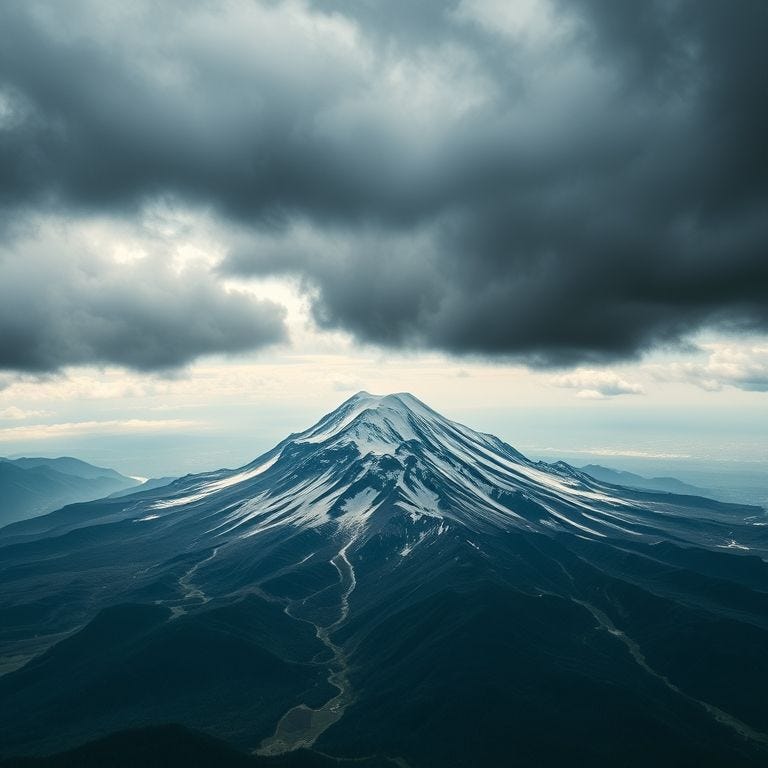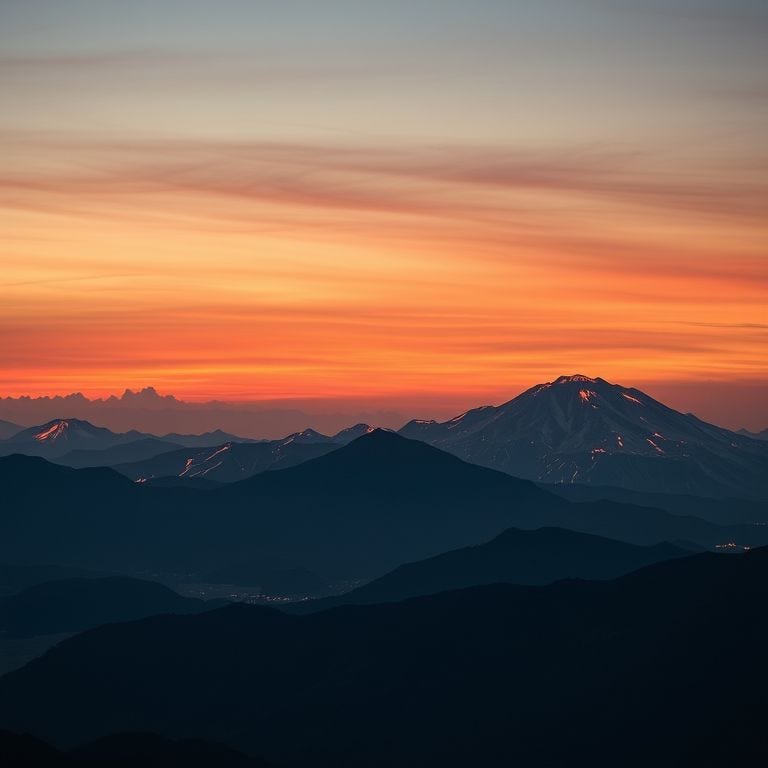Cascade Volcanoes Pulsing After Megaquake: What Scientists Found At Mount Rainier

Something strange is happening under America’s Cascade Range. After the powerful 8.8 earthquake in Kamchatka, Russia this summer, scientists expected aftershocks and tsunami waves. What nobody expected were volcanoes thousands of miles away pulsing in rhythm, at the exact same time, for hours.
It started with Mount Rainier, often called the most dangerous volcano in the U.S., and then spread across nearly the entire Cascade Range. The signals made researchers stop cold.
Let’s walk through what happened, what scientists know today, and what it means for people living in the Pacific Northwest.
The Shock That Started It All
On July 29, 2025, a monster earthquake ripped under the Kamchatka Peninsula in Russia. With a magnitude of 8.8, it ranked among the largest quakes in recorded history. Tsunami warnings rang out from Alaska to Japan.
While emergency teams braced for waves, seismic ripples spread across the globe. These were powerful enough to be picked up in places thousands of miles away, including the Cascade volcanic arc in the United States.
Strange Signals In The Cascades
Within hours, seismic monitors in Washington, Oregon, and Northern California started showing rhythmic patterns. From Mount Baker down to Mount Shasta, scientists tracked pulses repeating every few minutes.
At first, observers thought it was random noise. Post-quake vibrations often circle Earth like ripples in a pond. But the signals were not random. They were steady, repeating, and spread across more than a dozen volcanoes for nearly six hours.
Mount Rainier Takes The Spotlight
Mount Rainier was the first peak where strange pulses appeared. Located just 60 miles from Seattle and Tacoma, Rainier is closely watched because of its size, ice cover, and history. At 12:17 PM on July 30th, tremors began near its southeastern flank.
Minutes later, Mount St. Helens showed the same signals, then Mount Hood, then the Three Sisters in Oregon. It looked like a call-and-response between volcanoes.
By nightfall, scientists realized they were seeing something unfamiliar.
What Made The Pulses So Weird
The pulses repeated every 11 minutes. That timing was too clean for ordinary noise. Normally, warning signs of eruption include harmonic tremor, ground swelling, or changes in gas emissions. None of those were present.
Rainier and its neighbors looked quiet on the surface. Yet under the ground, they were pulsing together like they were tuned to the same clock.
Scientists React To The Puzzle
Within a day, USGS and university experts called an emergency session. Some suggested the waves were like aftershocks. Others compared them to early eruption tremors, only weaker and without the usual magma movements.
A new theory began to form. The earthquake may have “rung out” the Cascade Range, similar to striking a bell and hearing a tone. Each volcano responded to the passing global shockwave.
Could A Megaquake Nudge Volcanoes?
Here’s where things get more critical. Scientists already knew a mega-quake transfers stress to nearby faults. What’s new is watching volcanoes respond together in rhythm.
The idea is that magma chambers under volcanoes act like springs. A giant quake halfway across the planet applies a nudge. The spring wobbles, sending out measurable signals, even if no eruption is triggered.
Think back to 1980 when Mount St. Helens exploded. The first warning signs came only weeks earlier. That’s why Rainier pulsing after a mega-quake has grabbed everyone’s attention now.
Global Resonance: A Planet-Wide Echo?
This wasn’t only a Cascade story. Monitoring stations in Japan and Russia picked up matching tremors in their volcanic arcs. That raises the possibility of global volcanic resonance.
Some researchers say Earth’s mantle behaved like a massive resonating chamber, carrying energy from the Kamchatka quake deep into distant volcanic zones.
Micro Resonance And Volcanoes
The term “volcanic micro resonance” has now entered the picture. The concept is that huge quakes send faint but regular pulses into partially molten rock under volcanoes. The chambers respond with tiny oscillations.
At Mount Rainier, sensors near fumaroles even picked up small heat changes. At Newberry Caldera in Oregon, geothermal output rose slightly. The changes were minor but showed a real effect.
Mount Rainier’s Risks In Focus
Rainier is the giant nobody wants to wake up. With massive glaciers sitting on unstable slopes, the biggest worry is not lava but lahars. A lahar is a mudflow that rushes down a volcano during eruptions or even during partial collapses.
Studies show lahars from Rainier could reach nearby towns in under an hour and the outskirts of Tacoma in less than three. That is why residents and emergency teams take any odd signals very seriously.
Frequently Asked Questions
Is Mount Rainier about to erupt?
No eruption indicators are present. The signals are strange, but magma is not moving up toward the surface.
Should people in Seattle or Tacoma be worried?
Authorities say risk remains low at this time. But Rainier is always considered dangerous, and planning is necessary.
Is this like an aftershock?
Not exactly. Aftershocks are smaller quakes. This is more like resonance, where the volcano responds to a global pulse without a break in the crust.
Can scientists predict the next event?
Not precisely. Volcano monitoring improves every year, but large quakes produce unpredictable responses.
Lessons From The Pulsing Cascades
The strange event taught scientists one big lesson: volcanoes are far more sensitive to distant quakes than previously believed. That means ongoing monitoring is critical because an earthquake across the ocean could ripple through American volcanoes.
What Comes Next For The Cascades
Agencies like the USGS are combing through decades of archived data to see if similar patterns happened before. New instruments are being deployed to track small shifts in heat, gas, or ground movement.
The weird pulses faded after two days, but the Cascades remain under closer watch than before.
Takeaways For Everyday People
If you live in the Pacific Northwest, know your local hazard maps. Practice evacuation routes if you are in an area exposed to lahars. Follow official updates from the USGS Volcano Hazards Program.
Don’t panic over faint signals, but don’t ignore them either. Communities that stay informed and prepared are far safer when natural events unfold.
Wrapping It Up
The pulses are gone, but the questions are louder than ever. If a quake on the far side of the Pacific can trigger signals under Rainier, then it is clear the planet’s largest forces are connected in ways few expected.
For now, Rainier sleeps, but everyone is listening.

AI Generated SEO Notes and Strategies
Meta Title: Cascade Volcanoes Pulse After Kamchatka Megaquake | Mount Rainier Signals Explained
Meta Description: After the July 2025 Kamchatka 8.8 megaquake, the Cascade volcanoes pulsed together in rhythm. Learn what scientists discovered about Mount Rainier, volcanic micro resonance, and what this means for the Pacific Northwest.
#Tags: cascades volcanoes, mount rainier eruption, kamchatka earthquake 2025, usgs volcano monitoring, mount st helens tremors, pacific northwest earthquakes, mount hood seismic activity, three sisters volcano oregon, volcanic resonance, lahar risk washington
Longtail Tags: mount rainier earthquake connection, cascade volcanoes synchronized tremor, can earthquakes trigger volcanoes, mount rainier lahar evacuation, usgs cascade volcano update
AI Strategies for Additional Consideration
- Use comparison charts showing Rainier vs other volcanoes to improve engagement.
- Add a timeline infographic of the pulses for visual learners.
- Publish short social posts featuring FAQs about Rainier to drive traffic.
- Create internal links to related volcanic hazard preparedness guides.
- Use external authority links to USGS Volcano Hazards Program, Pacific Northwest Seismic Network, and Smithsonian Global Volcanism Program for credibility.
Comments
Post a Comment